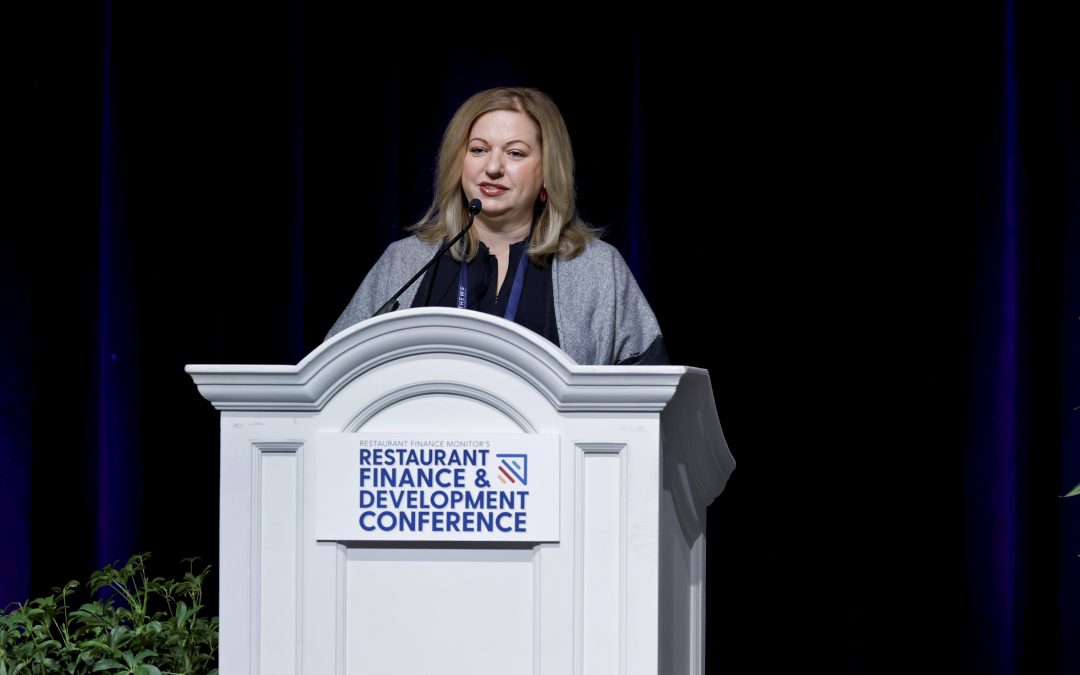Automation continues to seep into the minds of restaurants as operators look for ways to address the various challenges faced in today’s market.
During the second morning of the Restaurant Finance & Development Conference, Sharon Zackfia, partner and group head of the consumer sector at William Blair, dove into why restaurants are increasingly looking into automation and what types of restaurants are more likely to benefit from this trend.
“I think there are some structural changes that have occurred that actually make robotics more of a serious consideration today, and we think they’ll become more of a serious consideration in the future,” said Zackfia.
A main attribution for the automation push is labor, as costs continue to rise. Zackfia noted how California’s minimum wage for fast-food workers is raising to $20 dollars an hour next year.
“As we look at the cost of labor going up, we also expect the cost of robotics to come down over time,” said Zackfia—adding that in a decade, she estimates it will become more of a solution for many.
Zackfia posed the example of Starbucks and Domino’s building their own tech stack 15-20 years ago and how today, most companies can leverage third-party solutions to help with the digital aspects of labor.
Additionally, robots have the ability to automate mundane, repetitive tasks for employees, that “people just don’t like to do,” said Zackfia—referencing Chipotle’s automated tortilla maker machine and its ‘autocado’ robot which cores and slices avocados.
“Those are the two least liked tasks [for Chipotle workers],” said Zackfia. “So, it makes their employees happier, what happens when your employees are happier? They stay around longer.”
Zackfia also mentions automation aiding in customer satisfaction, relating to order accuracy and speed, as well as reducing waste amid accurate portion sizes. Opportunities also arise in simplifying new employee training and onboarding.
One size does not fit all
Earlier this year Sweetgreen opened its first robotic kitchen in Naperville Illinois. In the first month, the location reported unit-level margins at 27 percent—a significant jump for the fast-casual, which usually reports single-digit margins in that period.
“If you have robotics and you do that correctly, you have higher margins,” said Zackfia. “I think the opportunity here is to harvest that margin, or reinvest the low price points and broaden your consumer appeal.”
However, Zackfia did acknowledge that robotics are not a one-size-fits-all solution.
Limited-service or fast-casual, company-owned restaurants are the best suited for automation. “Because franchisors do not feel the direct impact of labor, like a franchisee or a company-owned model,” she said. “So, it’s not surprising that Chipotle and Sweetgreen are pioneering some of this.”
Simplified menus also work best when it comes to automation. “If you have 150 items on your menu it’s very difficult to find a solution at cost-effective means.”
Whereas, fast-casual menus and foods such as bowls, salads, and pizzas are easier to assemble in robotic formation.
“Something like rolling a burrito, it requires a certain amount of human dexterity, I’m not saying there won’t be robots that do that eventually, but I haven’t seen it yet,” said Zackfia.
Restaurants that do high volumes can also reap most benefits. Especially during high traffic, peak day parts, where automation can assist in streamlining more sales.
Finally, companies with a good amount of whitespace are more likely to benefit from automation. “Because it’s hard to add technology, it’s easier to build out technology as an enabler, and a high digital mix is also nice because the digital can feed right into the POS, filtering out the human error part of it,” said Zackfia.
The Restaurant Finance & Development Conference, presented by the Restaurant Finance Monitor—sister publication of Food On Demand, wrapped up Wednesday, November 15, at The Bellagio in Las Vegas.


